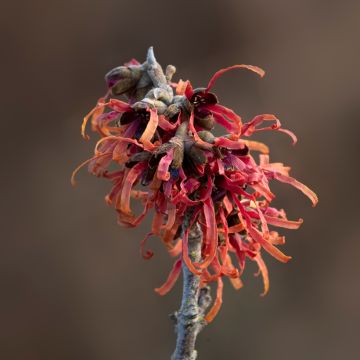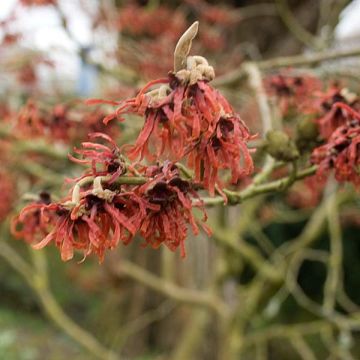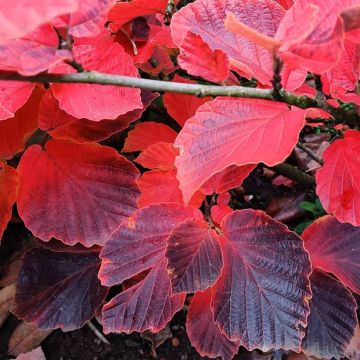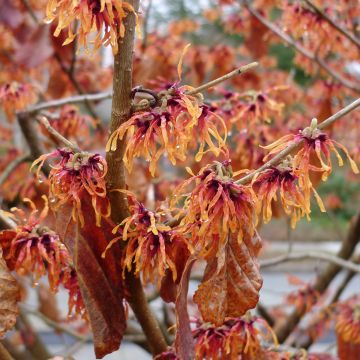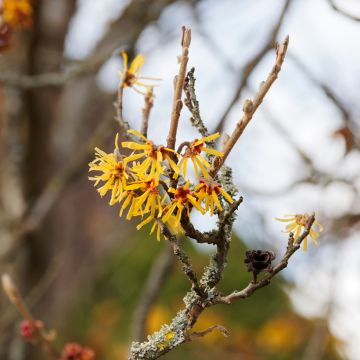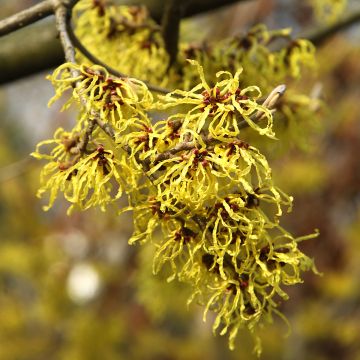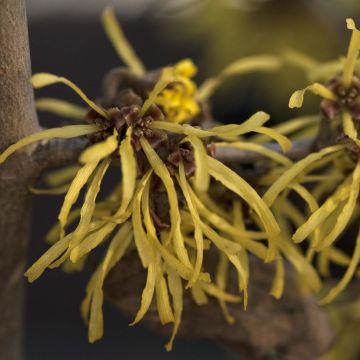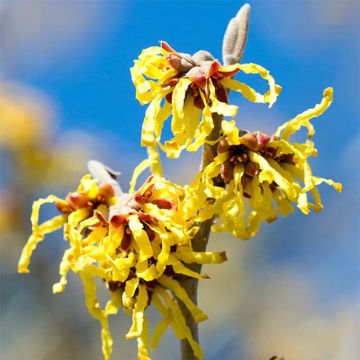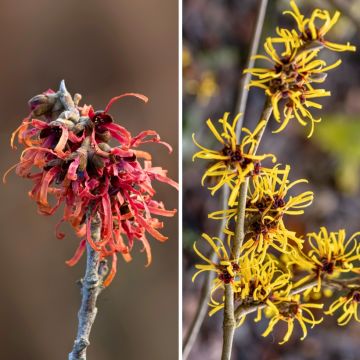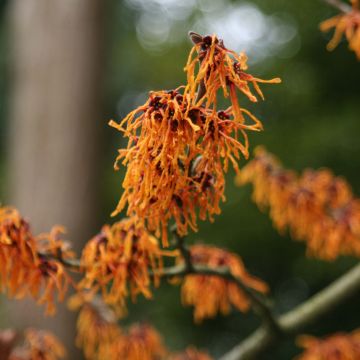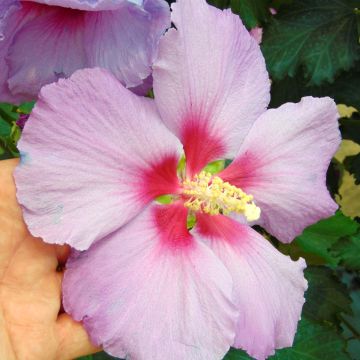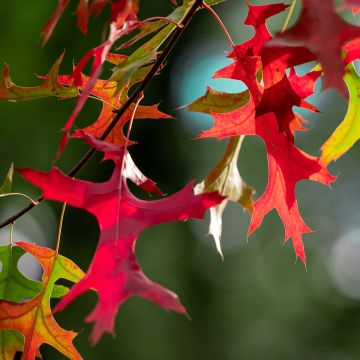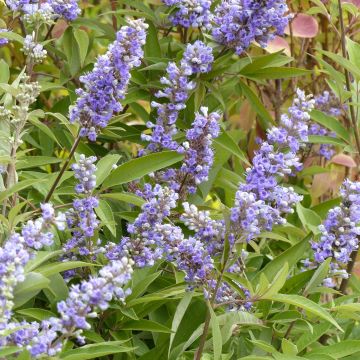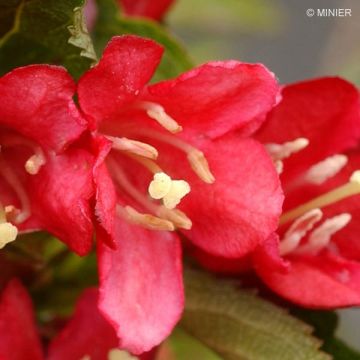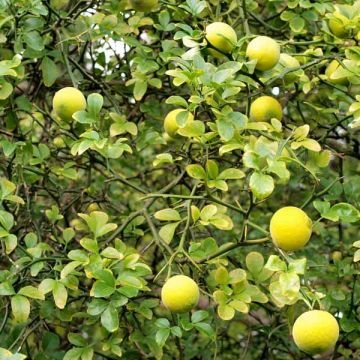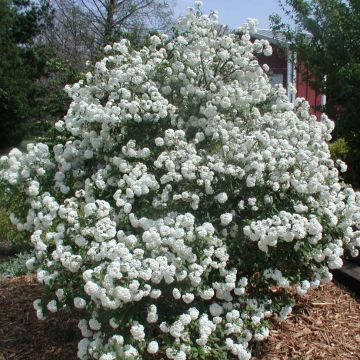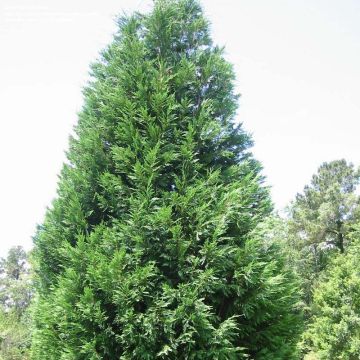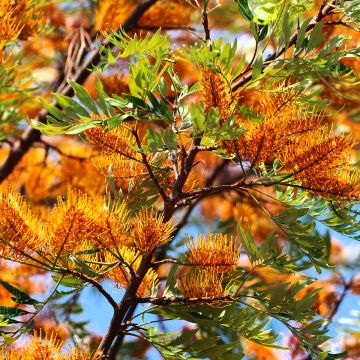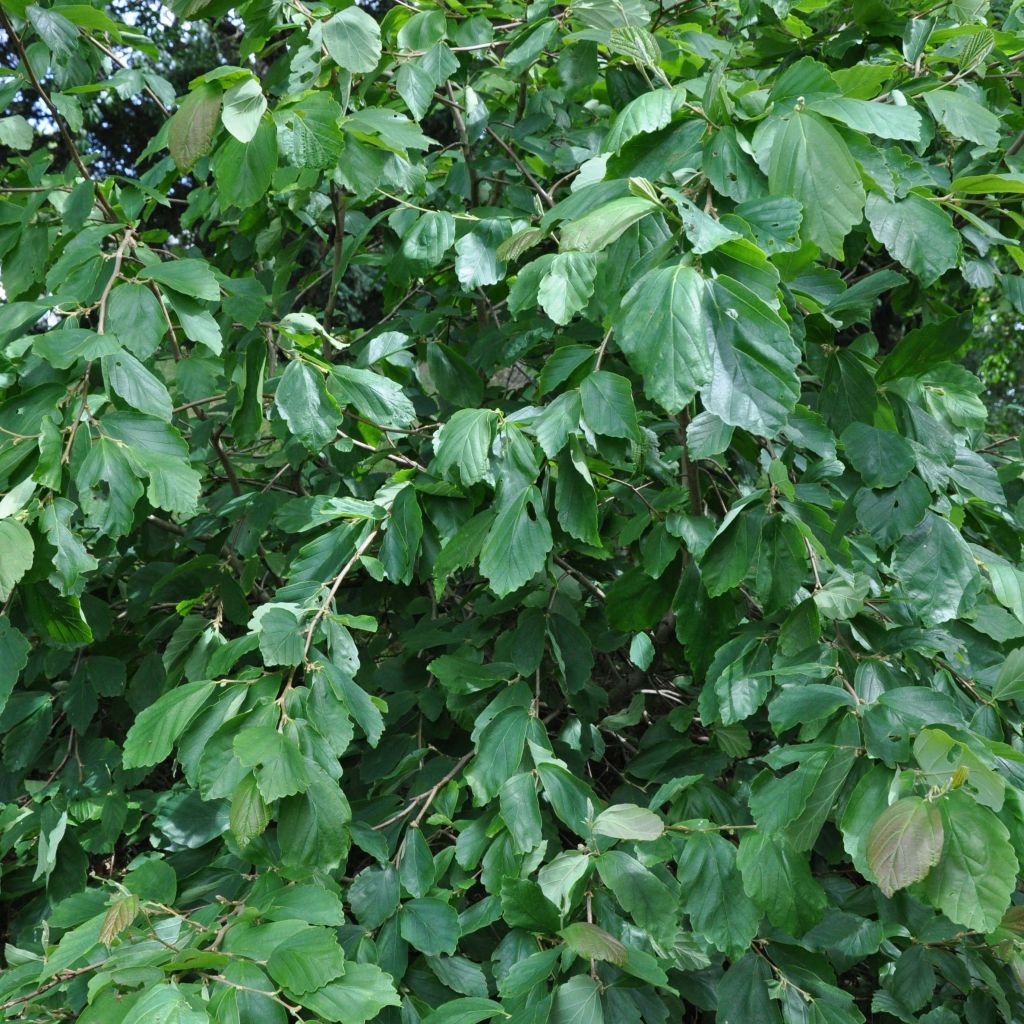

Hamamelis japonica Pendula - Witch Hazel
Hamamelis japonica Pendula - Witch Hazel
Hamamelis japonica Pendula
Japanese Witch Hazel
After a first spoiled shipment, the very responsive and understanding customer service sent me a young plant. This one is doing well and will soon flower. Promise of flower is a serious "house".
Aime, 24/01/2022
This item cannot be shipped to the selected country
Delivery charge from €5.90
More information
Schedule delivery date,
and select date in basket
This plant carries a 24 months recovery warranty
More information
We guarantee the quality of our plants for a full growing cycle, and will replace at our expense any plant that fails to recover under normal climatic and planting conditions.
From €5.90 for pickup delivery and €6.90 for home delivery
Express home delivery from €8.90.

Does this plant fit my garden?
Set up your Plantfit profile →
Description
The 'Pendula' Japanese Hamamelis, also known as Witch Hazel, stands out from other witch hazels mainly because of its strongly weeping habit, which gives the leafy shrub the appearance of a curiously gathered mass. Its lightly fragrant flowering, a discreet pale yellow punctuated with dark pink, appears directly on the branches in February-March. Also notable is its autumn foliage, which takes on sumptuous shades of orange, yellow, and red, sometimes purple-violet. This variety, as ornamental as it is original, brightens up autumn, enlivens the garden in winter with its unique architecture, and signals the end of gloomy days. Highlight it on an evergreen carpet and early-flowering bulbs to create a timeless tableau!
The Pendula Japanese Hamamelis is a rare form of Japanese Witch Hazel, originating in Japan as its name suggests, and the source of many popular hybrid varieties in gardens. All these plants belong to the hamamelidaceae family, which also includes Loropetalum, Liquidambar, and Persian Parrotia, all of which invariably display fantastic autumnal foliage colours. 'Pendula' slowly forms a strongly weeping bush, composed of a vertical trunk supporting a crown of trailing branches. It will reach a height of approximately 2.50 m (8 ft 2 in) with a spread of 3 m at maturity. Its deciduous foliage is composed of ovate leaves, initially yellowish-green with bronze reflections in spring, becoming dark green in summer, and then turning coppery orange and red with green or purplish patches in autumn, filling the garden with warm hues. Its slightly scented flowers are a delightful surprise in late winter and a boon for early bees. They abound on bare branches during the months of February and March, consisting of 4 elongated and curiously wrinkled, almost claw-like petals and pink-red stamens.
The Pendula Japanese Hamamelis thrives in rich, humus-rich, low-limestone, and light soils. It will be perfectly suited to a semi-shaded position. Plant it on the edge of woodlands, under large trees, or showcase it in a border alongside Heucheras, Daphnes, and Sarcococca. It will also be splendid in a mixed border, combined with evergreen shrubs such as autumn camellia or Chimonanthus praecox. At its base, you can plant winter heathers, Japanese grasses like Hakonechloa macra, or hellebores.
Report an error about the product description
Hamamelis japonica Pendula - Witch Hazel in pictures
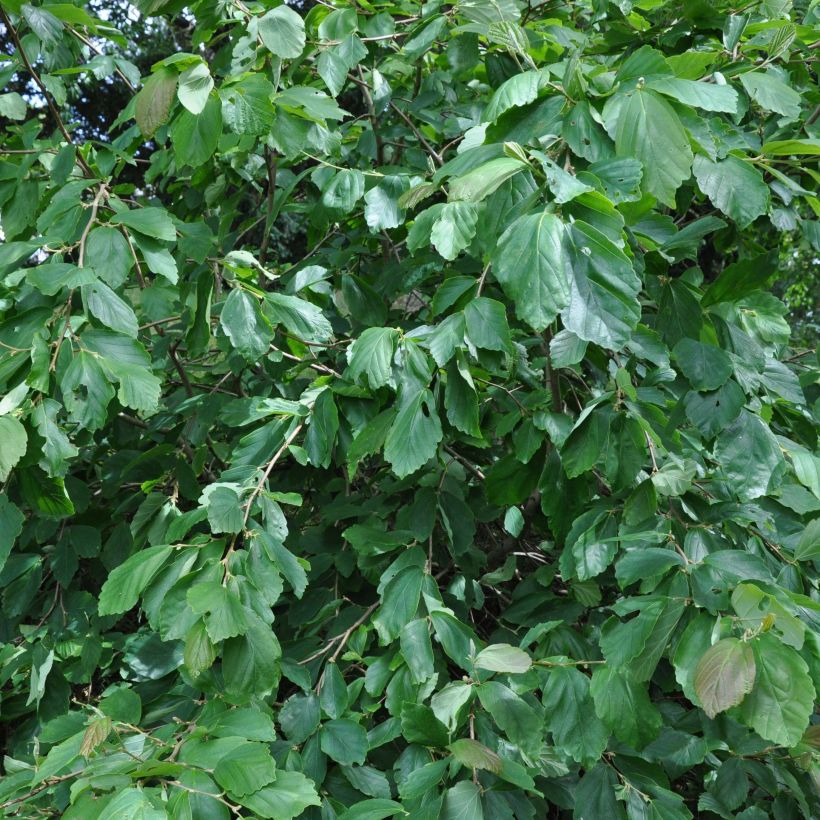

Plant habit
Flowering
Foliage
Botanical data
Hamamelis
japonica
Pendula
Hamamelidaceae
Japanese Witch Hazel
Cultivar or hybrid
Other Hamamelis - Witch-hazel
Planting and care
To fully enjoy the beauty of your Hamamelis intermedia Pendula, plant it near the house so that it stands out against a dark background of evergreen foliage. A partially shaded exposure is preferred to scorching sun. Being intolerant to limestone, it should be grown in ericaceous soil, or at least in non-limestone soil enriched with leaf compost. Tip: Hamamelis plants dislike limestone soils, which they indicate by the summer yellowing of their leaves and reduced flowering. To facilitate its establishment, incorporate ericaceous soil during planting. The soil should remain moist, even in summer. Mulching at the base of the plant will help maintain moisture. A moist, sufficiently deep, and humus-rich soil, even on limestone subsoil, should encourage the growth of the hamamelis.
Planting period
Intended location
Care
-
, onOrder confirmed
Reply from on Promesse de fleurs
Hedge shrubs
Haven't found what you were looking for?
Hardiness is the lowest winter temperature a plant can endure without suffering serious damage or even dying. However, hardiness is affected by location (a sheltered area, such as a patio), protection (winter cover) and soil type (hardiness is improved by well-drained soil).

Photo Sharing Terms & Conditions
In order to encourage gardeners to interact and share their experiences, Promesse de fleurs offers various media enabling content to be uploaded onto its Site - in particular via the ‘Photo sharing’ module.
The User agrees to refrain from:
- Posting any content that is illegal, prejudicial, insulting, racist, inciteful to hatred, revisionist, contrary to public decency, that infringes on privacy or on the privacy rights of third parties, in particular the publicity rights of persons and goods, intellectual property rights, or the right to privacy.
- Submitting content on behalf of a third party;
- Impersonate the identity of a third party and/or publish any personal information about a third party;
In general, the User undertakes to refrain from any unethical behaviour.
All Content (in particular text, comments, files, images, photos, videos, creative works, etc.), which may be subject to property or intellectual property rights, image or other private rights, shall remain the property of the User, subject to the limited rights granted by the terms of the licence granted by Promesse de fleurs as stated below. Users are at liberty to publish or not to publish such Content on the Site, notably via the ‘Photo Sharing’ facility, and accept that this Content shall be made public and freely accessible, notably on the Internet.
Users further acknowledge, undertake to have ,and guarantee that they hold all necessary rights and permissions to publish such material on the Site, in particular with regard to the legislation in force pertaining to any privacy, property, intellectual property, image, or contractual rights, or rights of any other nature. By publishing such Content on the Site, Users acknowledge accepting full liability as publishers of the Content within the meaning of the law, and grant Promesse de fleurs, free of charge, an inclusive, worldwide licence for the said Content for the entire duration of its publication, including all reproduction, representation, up/downloading, displaying, performing, transmission, and storage rights.
Users also grant permission for their name to be linked to the Content and accept that this link may not always be made available.
By engaging in posting material, Users consent to their Content becoming automatically accessible on the Internet, in particular on other sites and/or blogs and/or web pages of the Promesse de fleurs site, including in particular social pages and the Promesse de fleurs catalogue.
Users may secure the removal of entrusted content free of charge by issuing a simple request via our contact form.
The flowering period indicated on our website applies to countries and regions located in USDA zone 8 (France, the United Kingdom, Ireland, the Netherlands, etc.)
It will vary according to where you live:
- In zones 9 to 10 (Italy, Spain, Greece, etc.), flowering will occur about 2 to 4 weeks earlier.
- In zones 6 to 7 (Germany, Poland, Slovenia, and lower mountainous regions), flowering will be delayed by 2 to 3 weeks.
- In zone 5 (Central Europe, Scandinavia), blooming will be delayed by 3 to 5 weeks.
In temperate climates, pruning of spring-flowering shrubs (forsythia, spireas, etc.) should be done just after flowering.
Pruning of summer-flowering shrubs (Indian Lilac, Perovskia, etc.) can be done in winter or spring.
In cold regions as well as with frost-sensitive plants, avoid pruning too early when severe frosts may still occur.
The planting period indicated on our website applies to countries and regions located in USDA zone 8 (France, United Kingdom, Ireland, Netherlands).
It will vary according to where you live:
- In Mediterranean zones (Marseille, Madrid, Milan, etc.), autumn and winter are the best planting periods.
- In continental zones (Strasbourg, Munich, Vienna, etc.), delay planting by 2 to 3 weeks in spring and bring it forward by 2 to 4 weeks in autumn.
- In mountainous regions (the Alps, Pyrenees, Carpathians, etc.), it is best to plant in late spring (May-June) or late summer (August-September).
The harvesting period indicated on our website applies to countries and regions in USDA zone 8 (France, England, Ireland, the Netherlands).
In colder areas (Scandinavia, Poland, Austria...) fruit and vegetable harvests are likely to be delayed by 3-4 weeks.
In warmer areas (Italy, Spain, Greece, etc.), harvesting will probably take place earlier, depending on weather conditions.
The sowing periods indicated on our website apply to countries and regions within USDA Zone 8 (France, UK, Ireland, Netherlands).
In colder areas (Scandinavia, Poland, Austria...), delay any outdoor sowing by 3-4 weeks, or sow under glass.
In warmer climes (Italy, Spain, Greece, etc.), bring outdoor sowing forward by a few weeks.

































